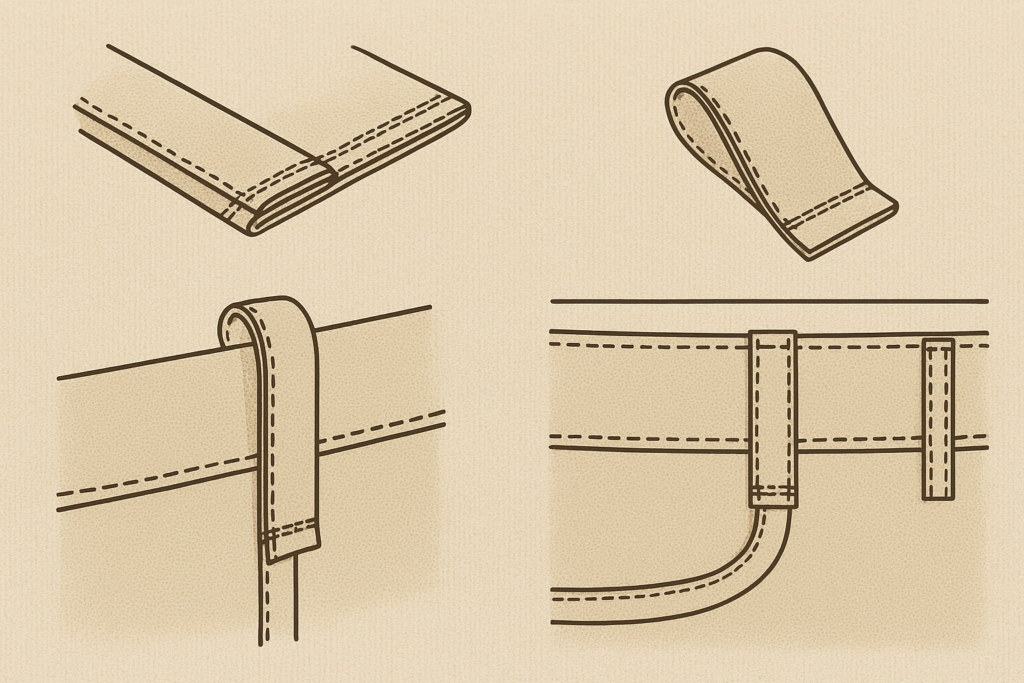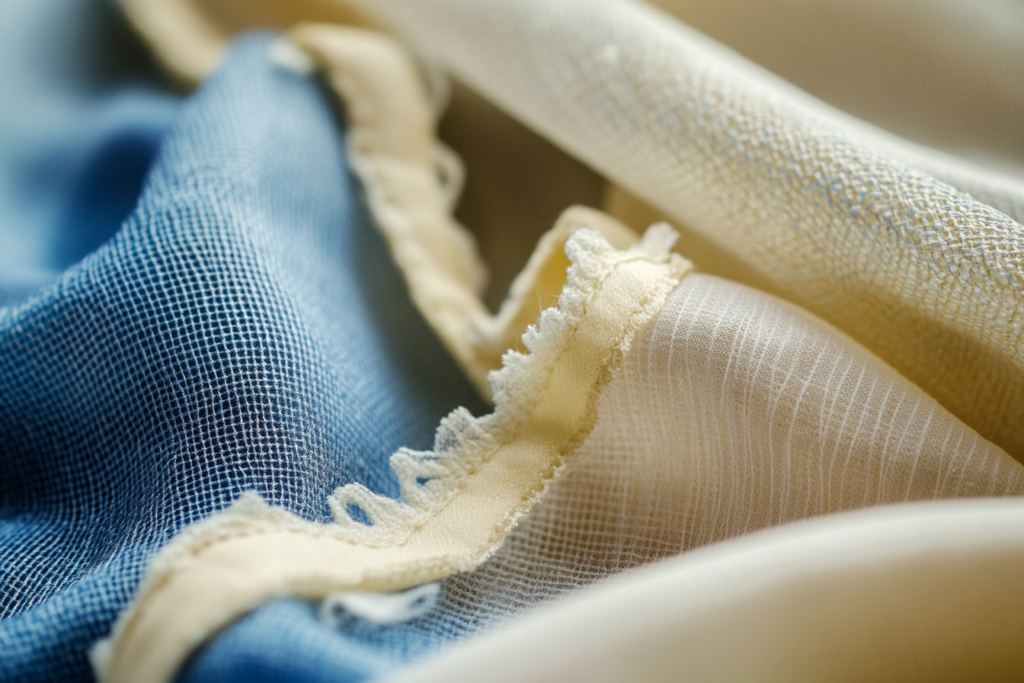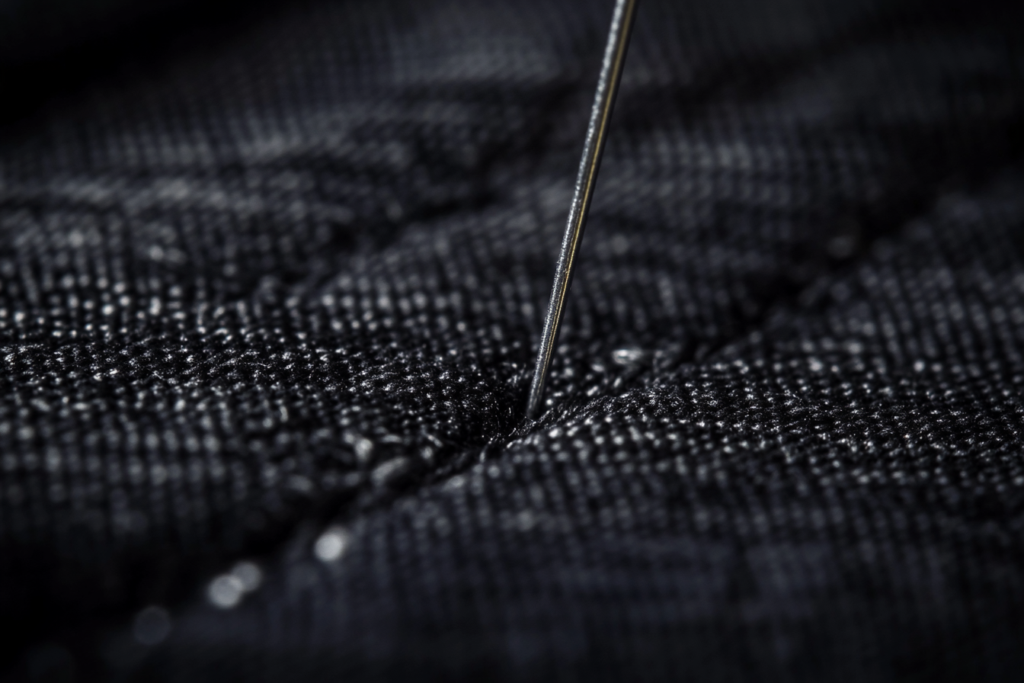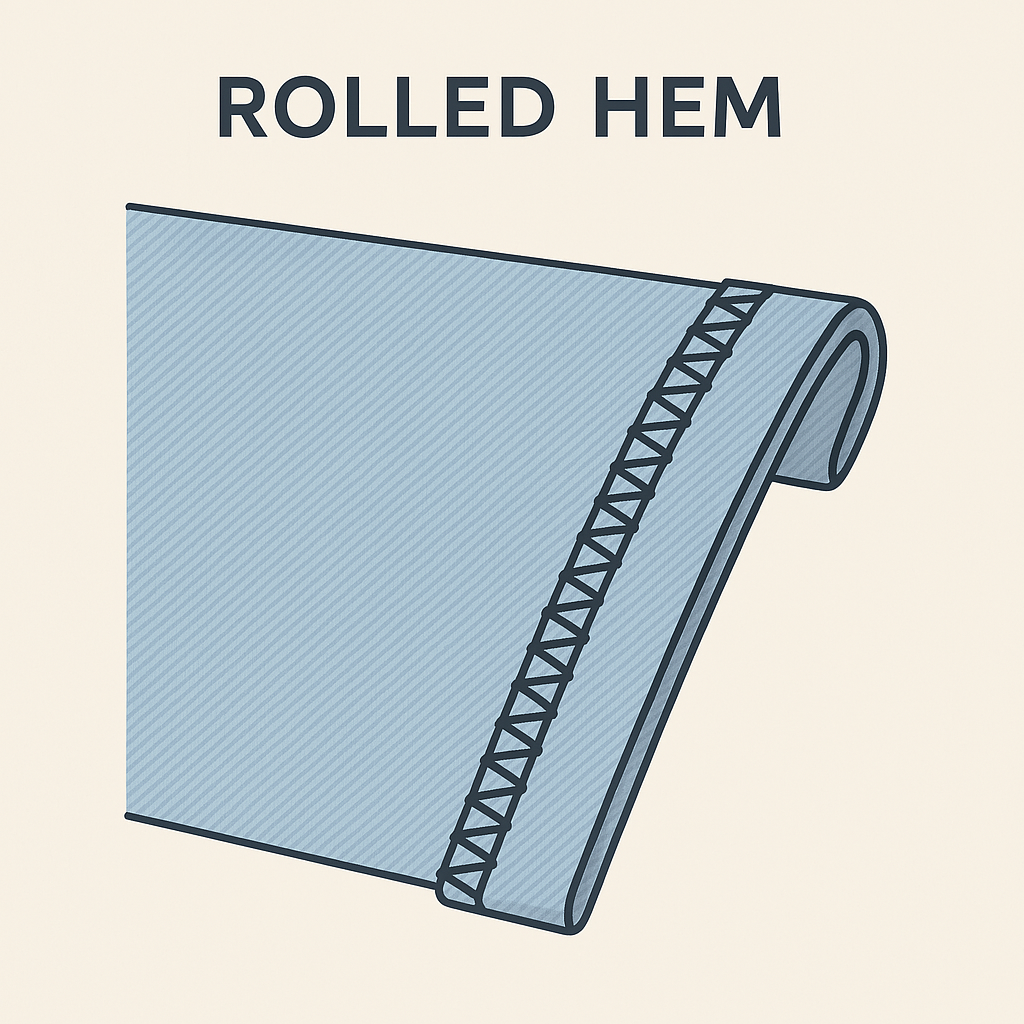Loops in Garment Construction: Structure, Function & Stitching Methods
🧵 What Are Loops?
Loops are narrow fabric strips sewn into garments—primarily waistbands—to hold belts, ties, or sashes in place. Though commonly seen on jeans, casual pants, and uniforms, loops are also used decoratively or functionally in a variety of outerwear and workwear.
Loops can be stitched in multiple ways depending on the garment’s fabric, fit, and production goals.
🔧 How Loops Are Constructed
🔸 Loop Seam Finishing
- Technique: The Universal Twin Needle Hem Seam is used to stitch the raw edge of the loop fabric.
- Purpose: Reduces bulk at the seam allowance while preventing fraying.
- Fabric edges are seamed together using flat stitching, ensuring durability.
- Ideal for heavier fabrics like denim or canvas.
🔸 Loop Attachment
- The loop is folded upward, with the top end backstitched or secured to the waistband.
- One of the most common attachment methods for jeans and casual pants.
- Can also be tied off for visual styling or folded and bar-tacked.
🔸 Finished Example
- Depicts loops sewn to the waistband of casual pants.
- Designed for daily wear, durability, and functionality.
📌 Note: Loops are cut from long fabric strips, pre-measured to size, and then stitched into the garment one by one.
📏 Loop Dimensions & Spacing
- Length: Typically 5–7 cm (2–2.75 in), depending on waistband height
- Width: Usually 1–1.5 cm (0.4–0.6 in) after folding
- Placement: Evenly spaced (e.g., 5 loops: 2 sides, 2 back, 1 front)
🎯 Always reinforce both the top and bottom of the loop to prevent tearing under tension.
👖 Loop Application Table
| Garment Type | Loop Style | Fabric Used | Stitching Method | Placement |
|---|---|---|---|---|
| Jeans | Folded Loop (Fig. 10.12d) | Denim | Twin needle hem + bar tack | Waistband exterior |
| Casual Pants | Flat Loop (Fig. 10.12e) | Cotton twill | Folded & topstitched | Waist seam |
| Workwear Trousers | Reinforced Wide Loop | Canvas | Backstitched & bar-tacked | Belt level |
| Skirts with Belts | Narrow Hidden Loop | Linen / Rayon | Side seam inclusion | Waistband interior |
| Jackets / Coats | Decorative Wide Loop | Wool / Blends | Topstitched with backing | Waist or chest height |
🪡 Best Practices for Sewing Loops
✔️ Use twin needle or lockstitch to secure raw edges
✔️ Pre-press and fold for uniform shape
✔️ Always reinforce stress points with backstitch or bar tack
✔️ Align loops with design symmetry and belt width
✔️ Avoid adding too many loops—it affects waistband flexibility
🎨 Loops as Design Elements
- Loops can be styled to match or contrast the garment fabric.
- Wide or colored loops serve as visual accents.
- Common in utility fashion, military wear, and urban streetwear.
📌 Summary
Loops play a critical role in both function and design, especially in garments like jeans, casual pants, and coats. Using techniques such as the Universal Twin Needle Hem Seam, loops can be sewn cleanly while keeping bulk to a minimum. Whether purely practical or an intentional style element, loops should be placed, cut, and sewn with precision to ensure comfort, strength, and symmetry.




